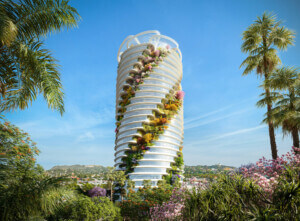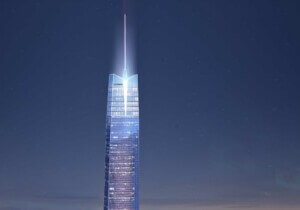Last week, architecture and design journal eVolo Magazine released the winning projects and renderings for its annual Skyscraper Competition. The proposals are all purely conceptual and idea-based; the competition is designed to “challenge the way we understand vertical architecture and its relationship with the natural and built environments,” writes eVolo.
First place goes to Yitan Sun and Jianshi Wu (United States) whose New York Horizon envisiones a skyscraper in Manhattan running along a sunken Central Park. “Is there a way to make Central Park available to more people? Our proposal is a hybrid multi-functional mega structure,” the team wrote in their brief. “Not by building up, but by digging down, it reveals the bedrock (mountain) that was hidden under Central Park, and creates space along the new cliff.”
In second place: Hadeel Ayed Mohammed, Yifeng Zhao, and Chengda Zhu (United States) for The Hive, a Manhattan skyscraper with drone docking stations. “The modules on the façade are designed to fit nine different types of drones, categorized by the shape and scale of their landing fixtures (point, bar or ring),” the team explained in their entry.
And third place was awarded to Valeria Mercuri and Marco Merletti (Italy). Their design, Data Tower, is a skyscraper for data centers in Iceland. “A data center is often a large industrial building without a significant architectural connotation, a big anonymous container,” they discussed in their submission. “The main issue of our project is to investigate a new morphological solution that could represent both the complexity and the importance of the building into which we keep our data.”
There were also 21 honorable mentions. In many of the submissions, designs addressed technology and environmental concerns. The magazine is also compiling the best entries from the past three years into a limited edition book.










